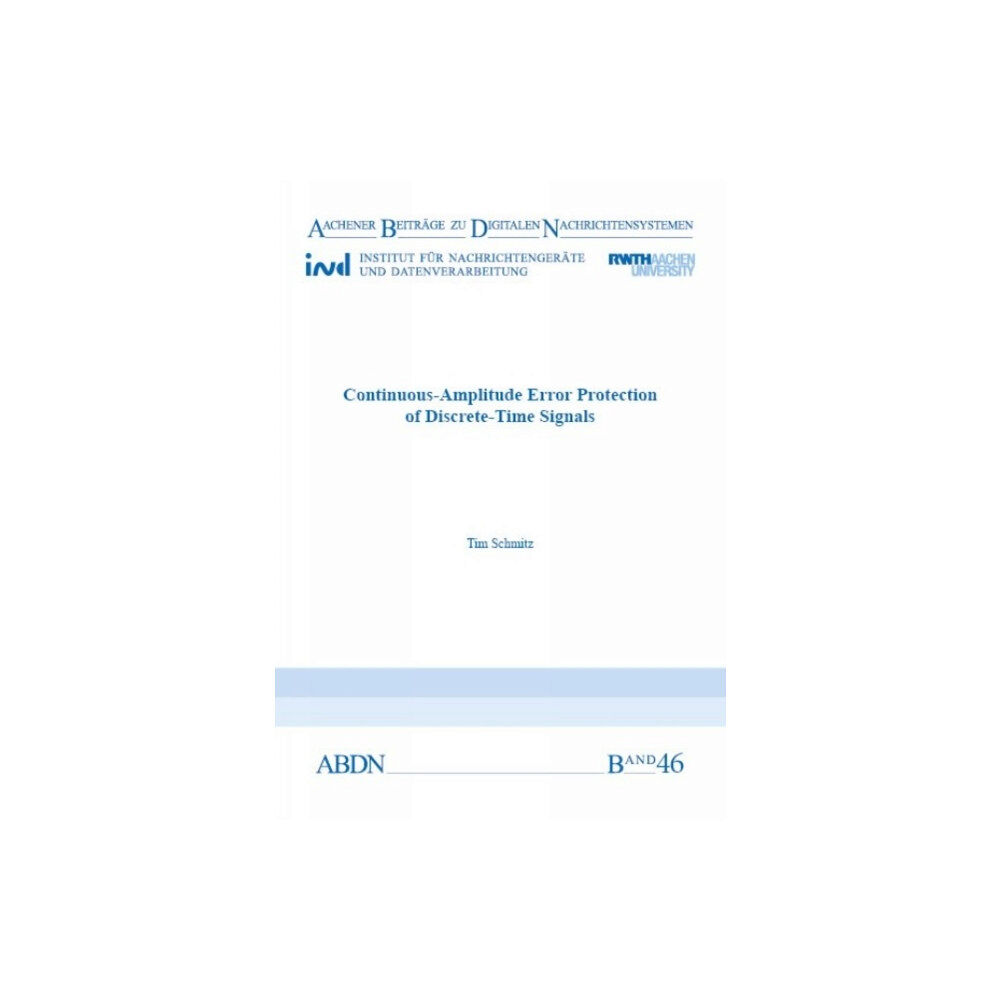- Hem
- Böcker
- Kurslitteratur
- Övrigt inom kurslitteratur
- Continuous-Amplitude Error Protection of Discrete-Time Signals (häftad, eng)

Continuous-Amplitude Error Protection of Discrete-Time Signals (häftad, eng)
Transmitting analog audio, video, or sensor data with a digital system requires sampling and quantization. While a sampled bandlimited si...
- Fri frakt
Produktbeskrivning
Transmitting analog audio, video, or sensor data with a digital system requires sampling and quantization. While a sampled bandlimited signal can be reconstructed perfectly if the Nyquist-Shannon sampling theorem is met, quantization unavoidably adds irreversible errors.
Given a certain bitrate for quantization (or source coding in general), the achievable signal quality is therefore limited. Transmission of the signal over a noisy channel causes additional errors. If some part of the bitrate is used for protecting the signal with a channel code, these additional errors can be reduced or even eliminated.
However, this reduces the achievable maximum quality if the gross bitrate is fixed. Since this compromise between quantization and channel coding is often designed for the worst-case channel, the signal quality saturates early with increasing channel quality, and transmission over a better channel is far below optimum.
Instead of conventional digital systems, this thesis covers a continuous-amplitude, discrete-time system.
Such a system does not exhibit this saturation of the signal quality, as its performance further improves with increasing channel quality. An example of such a system is a channel coding strategy using analog modulo block codes (AMB codes) for error protection. The encoder multiplies the unquantized symbol vector with a code matrix and limits the transmission power with a modulo operation.
In practice, AMB coding is implemented by digital signal processing. The digital representation of the information symbols can be very precise and no coarse quantization is required for bitrate reduction.
In this thesis, AMB codes are analyzed, designed, and evaluated.
The resulting code words, consisting of a lattice and a continuous component, are presented and analyzed. New decoding techniques are developed and evaluated. Additionally, a novel method to analytically estimate the quality of the decoded signal in terms of signal-to-distortion ratio (SDR) can replace computationally much more demanding simulations in many cases.
This estimation strategy allows evaluating the usefulness of codes with different dimensionalities. A new, efficient design concept is developed for codes with a single input symbol, which are most promising in terms of complexity and performance. Asystem using AMBcodes outperforms traditional digital transmission systems with short block lengths for medium to high signal-to-noise ratios on the channel.
Due to their typically very short block length and low encoding complexity, AMB codes are especially well suited for low-delay, low-power applications, such as hearing aids, wireless microphones, and wireless sensor networks.
| Format | Häftad |
| Omfång | 131 sidor |
| Språk | Engelska |
| Förlag | Verlag G. Mainz |
| Utgivningsdatum | 2020-01-31 |
| ISBN | 9783958863262 |
Specifikation
Böcker
- Häftad, 131, Engelska, Verlag G. Mainz, 2020-01-31, 9783958863262
Leverans
Betalning
Specifikation
Böcker
- Format Häftad
- Antal sidor 131
- Språk Engelska
- Förlag Verlag G. Mainz
- Utgivningsdatum 2020-01-31
- ISBN 9783958863262
